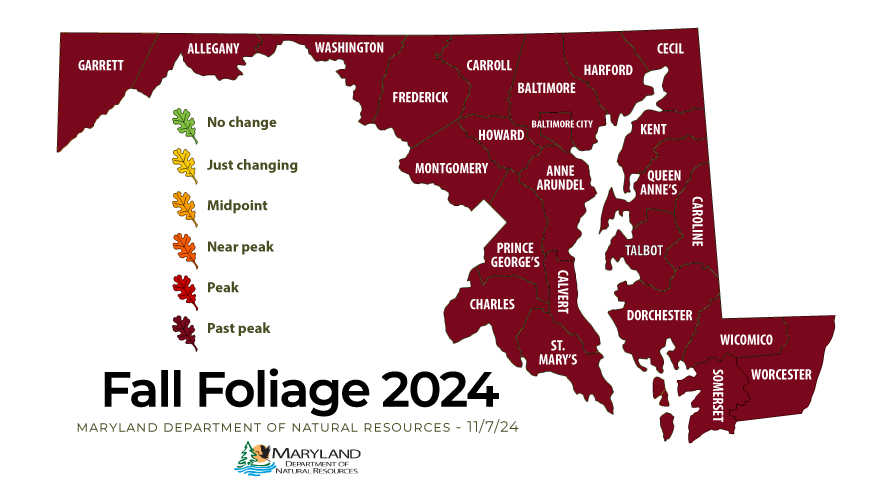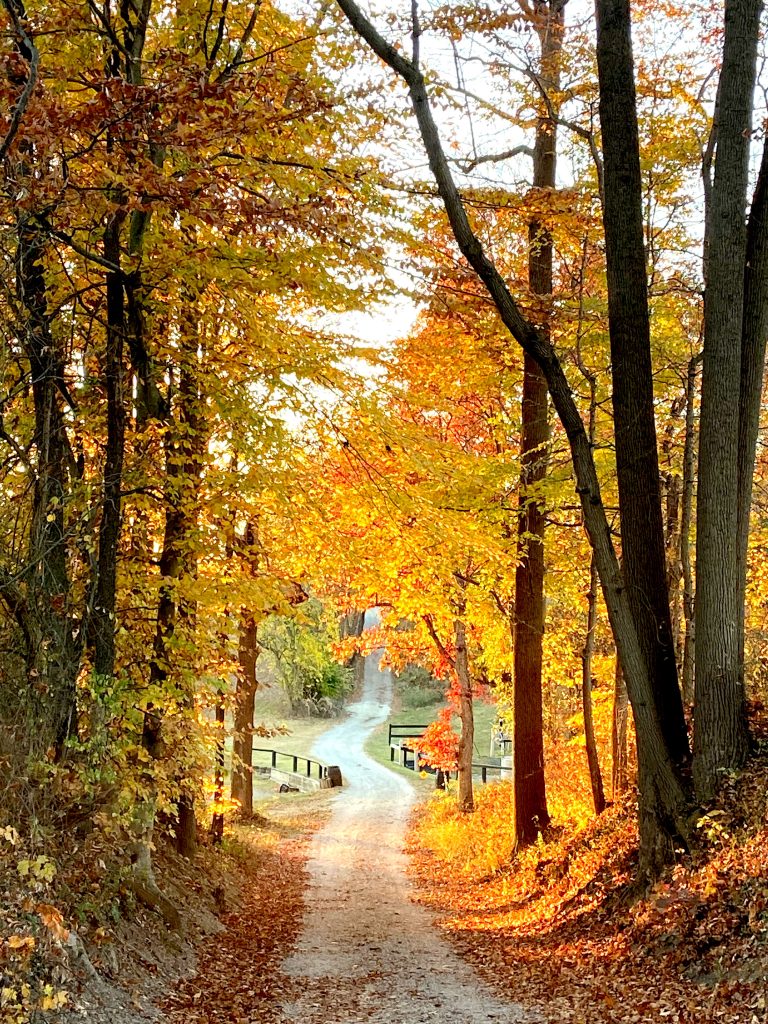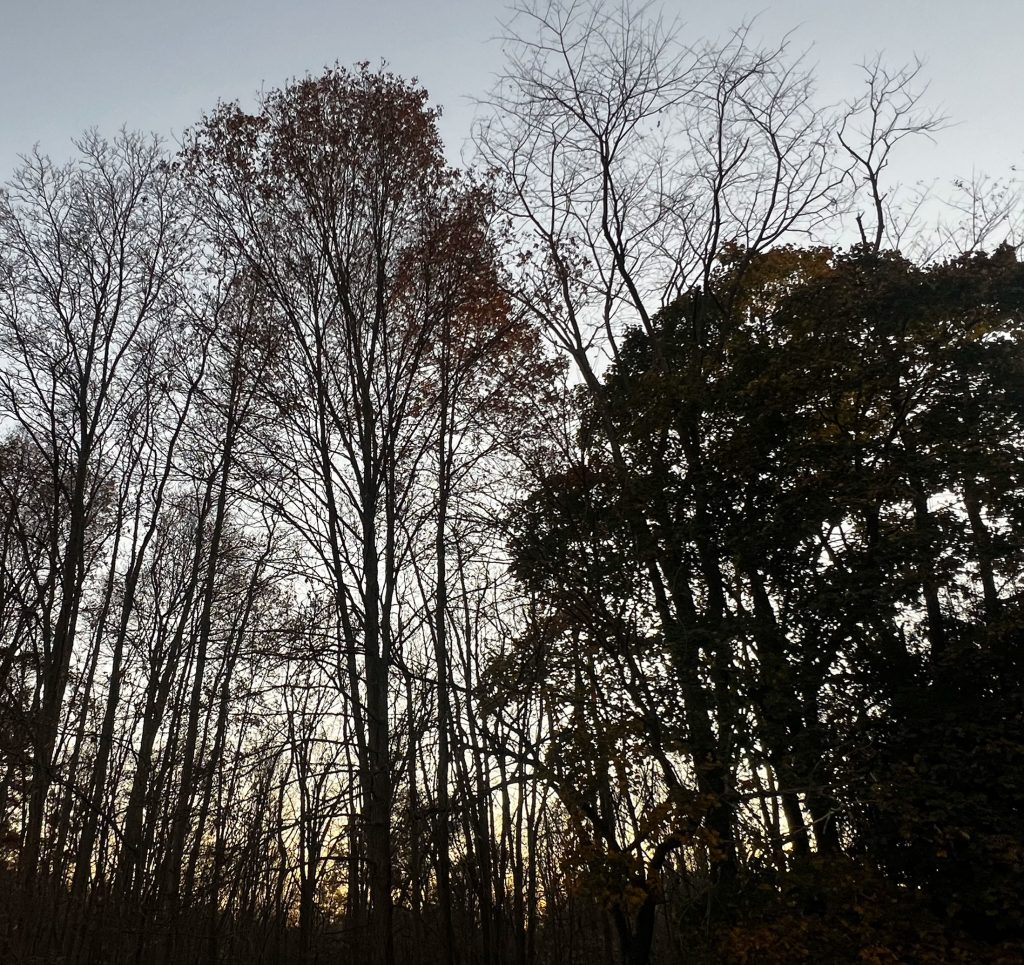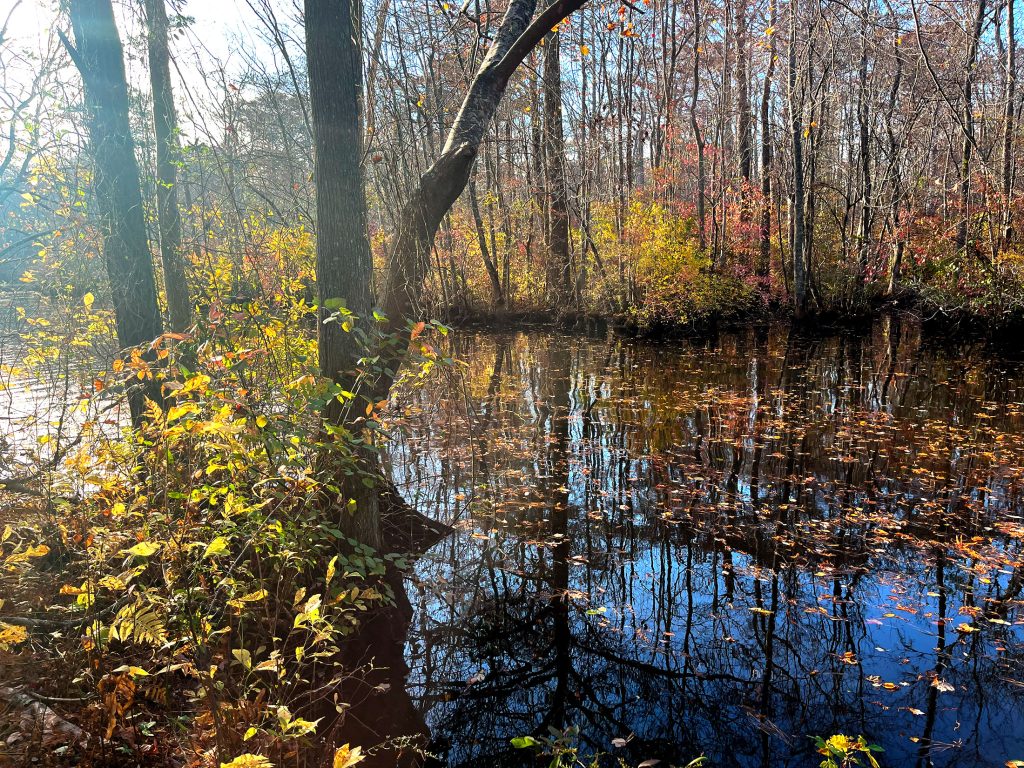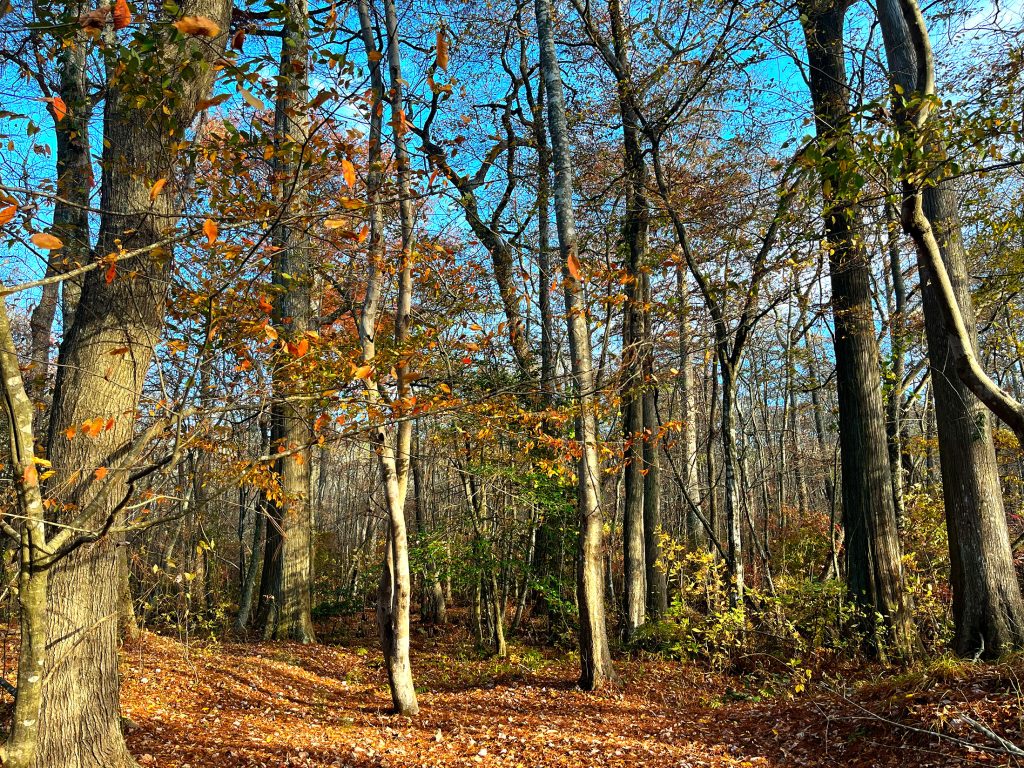Fall Foliage Report for November 7, 2024
All of Maryland is now past peak foliage for the year.
A drought that has affected Maryland throughout the year continues. As of Nov. 5, more than 53% of the state is experiencing severe drought, according to the U.S. Drought Monitor. More than 83% of Maryland is experiencing moderate drought.
These dry conditions have made for a dangerous wildfire season. Firefighters across the state are busy fighting and monitoring brush fires. Since Oct. 1, the Maryland Forest Service has responded to more than 30 wildland fires statewide.
Maryland instituted a ban on open-air burning Nov. 1. The law defines open-air burning as a fire where any material is burned in the open or in a receptacle other than a furnace, incinerator, or other equipment connected to a stack or chimney. More information about the burn ban is on the Maryland Department of Natural Resources website.
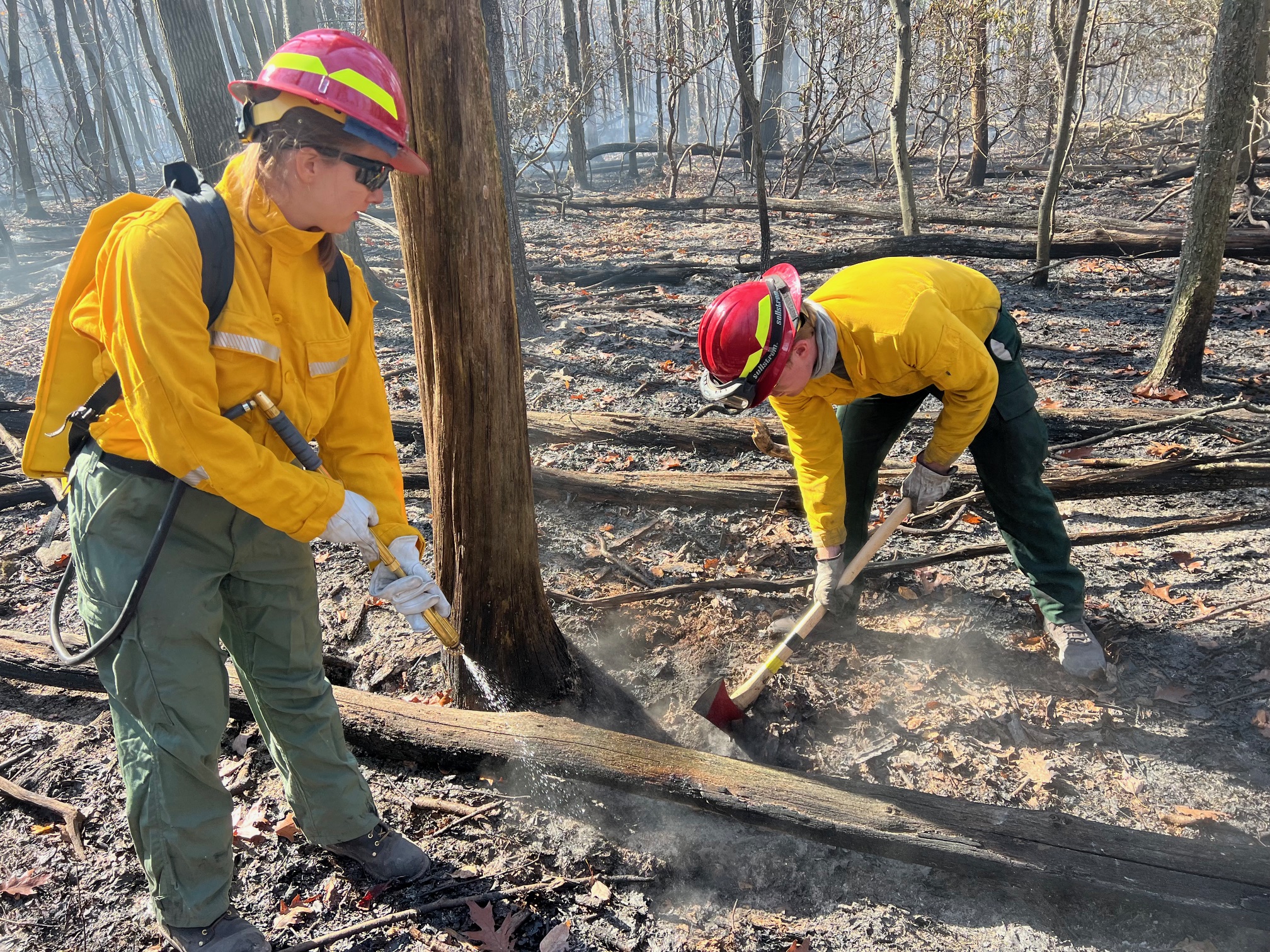
Maryland Park Service staff help suppress smoldering leaves in Western Maryland. Photo by Maryland DNR staff.
The state received less than 25% of the average precipitation for October, with much of the state receiving little or no precipitation with the exception of Garrett and Allegany counties. Those two counties have received less than 50% of the monthly average. The National Weather Climate Prediction Center weather outlook for Nov. 7-11 calls for normal or below normal precipitation for most of the state.
When fuel, drought, and weather conditions improve — a process that requires a significant rainfall – the ban will be lifted as soon as safely possible.
But even with fall foliage season winding down, there is still plenty to see and do outdoors in Maryland this fall – and keep watching the skies!
Central Maryland
The beautiful fall colors have passed Carroll County, in which once full trees now stand bare. A few plants still hold their leaves, creating red, orange, and yellow patches in the canopy. The ground is now covered with a beautiful tapestry of shades of browning orange leaves, which make a satisfying crunch when hiking, horseback riding, and mountain biking and with the passing of forest creatures.
Carroll County – Photo: Isabel Layton, Office of Outdoor Recreation
Southern Eastern Shore
Leaves are past their peak in Pocomoke.
Pocomoke River State Park. Photos by Ranger Ashley Brown
Recreational Spotlight
Waterfowl Festival, Easton – November 8 – 10
Join family and friends to celebrate the traditions, music, art and food that makes this area of the world so special. Shop from the world-renowned painters, sculptors, carvers and photographers to find that perfect piece. Live demonstration events including fly-fishing, retriever dog demonstrations, raptor demonstrations, the kids’ fishing derby and more.
Chesapeake Bay Bridge Run – November 10
Be aware that traffic may be tricky around the bridge and Annapolis on Sunday.
Celestial Report
Photo: Jordan Sarier
On November 9 we’ll be looking at the first quarter moon. Venus has been hanging around the last few days giving us some amazing views. The Northern Taurid meteor shower will continue into December. This is no blockbuster show, the peak rate can be around 5-10 per hour. But the potential for bright fireballs makes it worthwhile. Look towards the constellation Taurus, there is a chance to see action all night. The best time will be after midnight and before 2 a.m.
On November 11 the moon and Saturn will share some space in the sky. At around 9:30 both will be in the constellation Aquarius. They will be visible with the naked eye but if you have binoculars or a telescope you’ll get a better view.
Supermoon alert! On November 15 the last supermoon of the year, the Beaver Moon, will rise shortly after sunset. It will be at peak illumination at 4:29 pm. It’s a supermoon because it’s closer than normal. It will be 224,315 miles away. The closest point is known as the perigee. The farthest point, which is around 252,000 miles away, is called the apogee.

